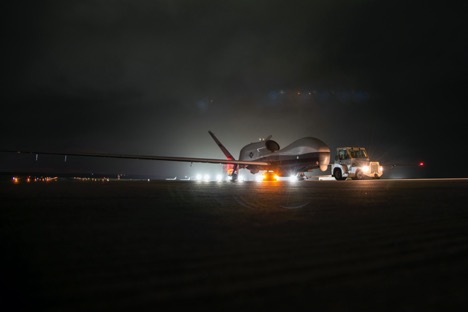Triton in Play: Implications for Australia
The US Navy’s Chief of Naval Operations (CNO) has re-stated the importance of the Northrop Grumman MQ-4C Triton high-altitude long-endurance maritime ISR system for the service.
Testifying to the Senate Appropriations Committee’s Defense subcommittee on March 11, CNO ADM Michael Gilday said the service was committed to the Triton capability.
“We just accelerated the deployment of our first two out to Guam, so they are on station and on mission right now,” ADM Gilday said. “The capabilities that the MQ-4 brings are game-changing in terms of long-range ISR at altitude, with sensors that we haven’t had supporting the fleet before.”
Acting Navy Secretary Thomas Modly added, “Unmanned is going to be a huge part of our future. Unmanned is a critical element — not just aerial but unmanned ships as well.”
The future of the Triton program has been in some doubt after planned production of the large UAS for the US Navy was paused for two years in the recent Draft President’s Budget (PB21). The pausing of US Navy production could have an adverse effect on the delivery schedule and cost of the RAAF’s planned Triton introduction due to lower volumes, unless the RAAF can be convinced to bring its production forward to fill the US Navy’s slots.
To this end, ADBR understand Defence’s Investment Committee (IC) met in Canberra in early March and is preparing a recommendation of how to proceed with the program to the National Security Committee of Cabinet for consideration.
This article was published by ADBR on March 20, 2020.

